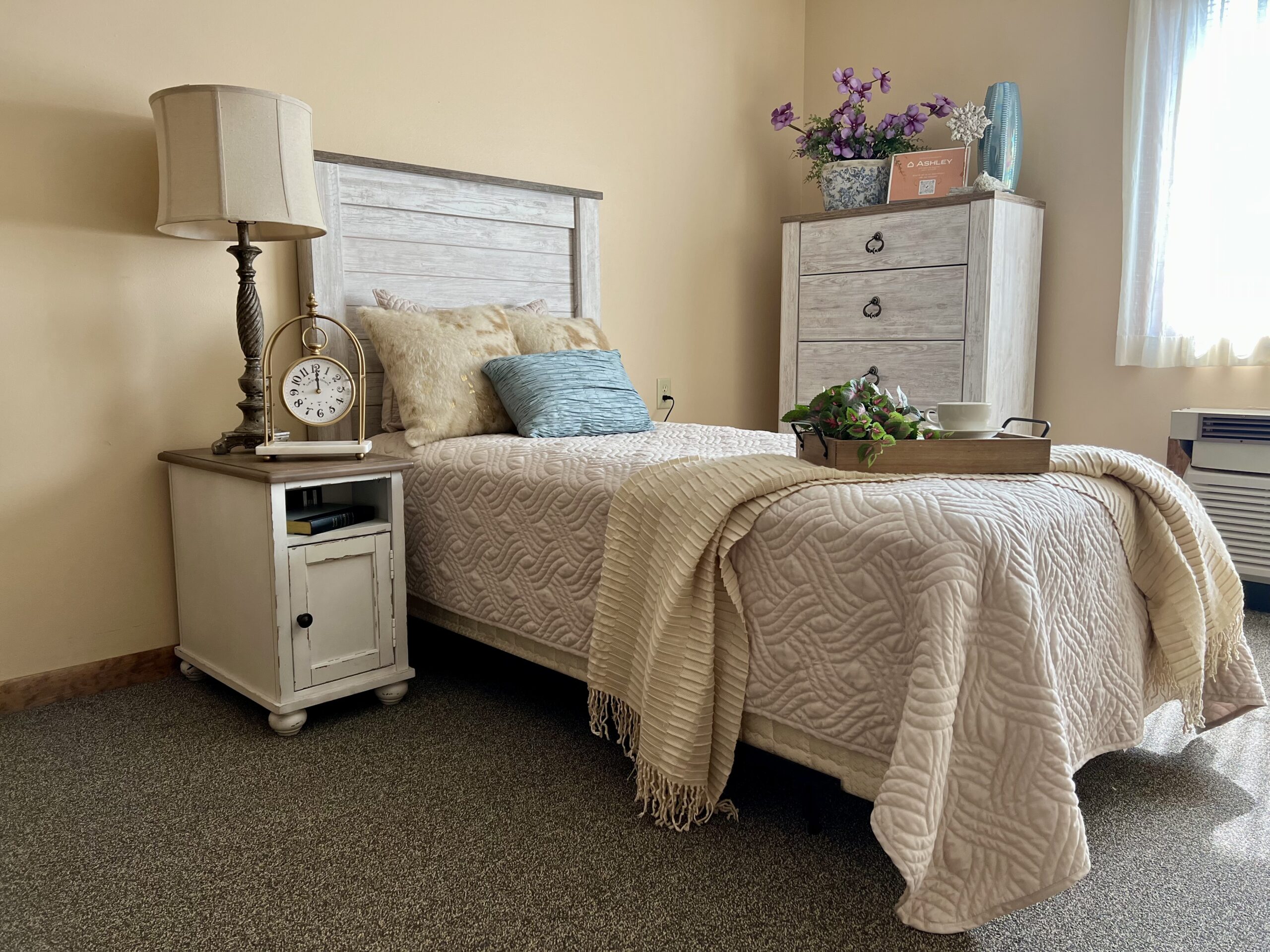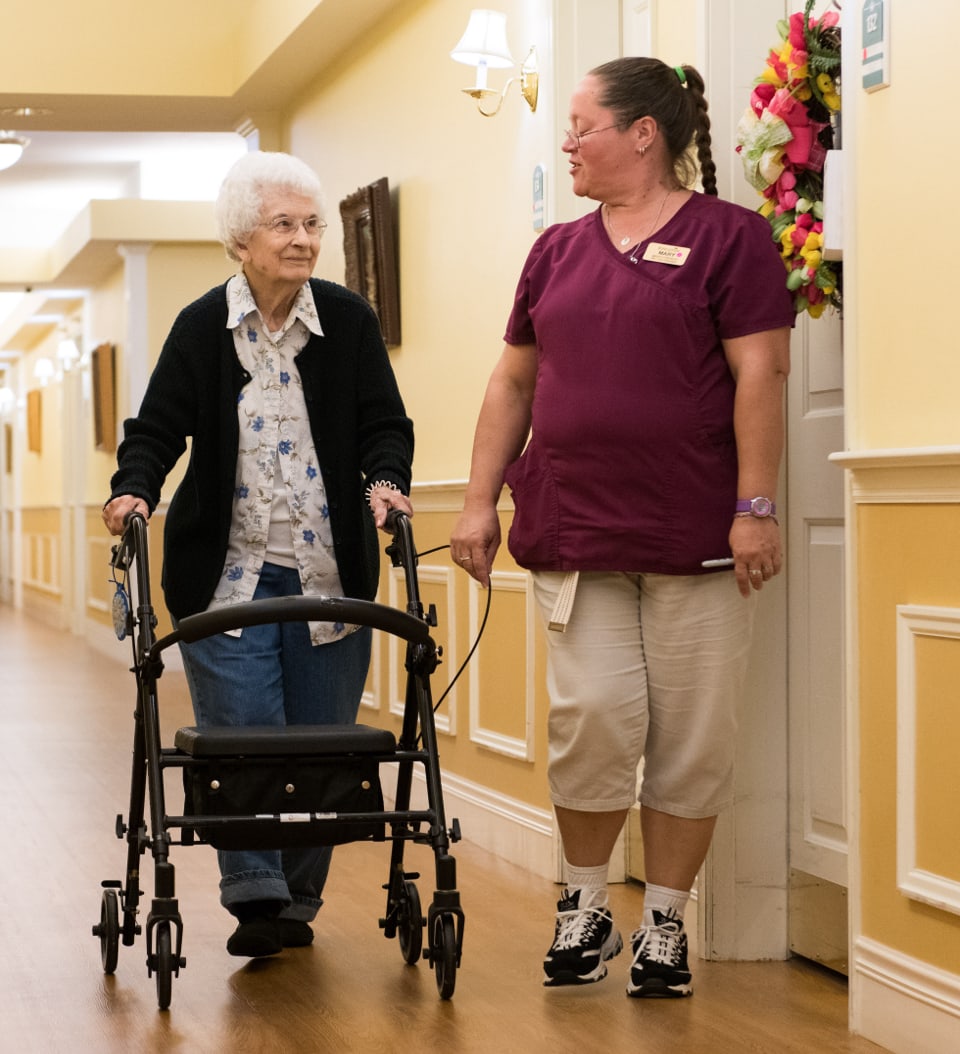Key Takeaways
- Multiple floor plan options accommodate different preferences and needs.
- In-suite amenities focus on safety, comfort, and accessibility.
- Personalizing your space helps create a true sense of home.
- Room options exist for couples with varying care requirements.
- Understanding pricing and what’s included helps you make informed decisions.
Finding the Right Living Space for Your Assisted Living Journey
When you’re considering assisted living for yourself or a loved one, the room becomes more than just a place to sleep—it becomes home. The right living space can make all the difference in comfort, independence, and overall happiness during this important life transition.
Assisted living rooms come in various sizes and configurations, each designed to meet different needs while providing safety features, personal amenities, and the flexibility to make the space uniquely yours.
At communities like Kingston Residence of Marion, you’ll find thoughtfully designed living options that prioritize both comfort and care, whether you’re looking for independent living or need more comprehensive support services.
Understanding Assisted Living Room Types and Floor Plans
Choosing the right floor plan sets the foundation for your daily comfort and routine. Most communities offer several options to match your lifestyle preferences and space needs.
Studio Apartments: Compact and Convenient Living
Studio apartments offer an efficient layout that combines your sleeping and living areas into one cohesive space. These rooms typically include a private bathroom equipped with safety features like grab bars and non-slip surfaces.
Many studios come with a small kitchenette, though some communities focus on central dining and provide minimal kitchen space. This option works well if you prefer a cozy, manageable living area that’s easy to navigate and maintain. For detailed information about different living options, explore our comprehensive guide to detailed floor plans.
One-Bedroom Apartments: Private and Spacious
One-bedroom apartments provide separate sleeping and living areas, giving you more privacy and space to spread out. You’ll have room for a comfortable seating area, personal belongings, and often a dining space.
These apartments frequently include fuller kitchen amenities, allowing you to prepare simple meals or snacks when you choose. The extra space makes it easier to accommodate visiting family members and create distinct areas for different activities throughout your day.
Two-Bedroom and Companion Suite Options for Couples and Extra Space
Two-bedroom units are ideal for couples who want separate sleeping areas or for individuals who need extra space for hobbies, storage, or guests. One bedroom can serve as your primary sleeping area while the other becomes an office, craft room, or guest space.
These larger apartments give couples flexibility when one spouse needs different care levels or sleep schedules. You’ll also have more storage throughout the unit and additional living space for entertaining or pursuing personal interests.
In-Suite Amenities and Features That Matter
The amenities in your room directly impact your daily comfort and safety. Modern assisted living rooms are designed with your well-being in mind, incorporating features that support independence while providing peace of mind.
Safety Features Built Into Every Room
Safety features are seamlessly integrated into every room design without compromising style or comfort. You’ll find grab bars strategically placed in bathrooms and showers, along with non-slip flooring throughout your living space.
- Wide doorways accommodate wheelchairs and walkers
- Emergency call systems with easily accessible response buttons
- Enhanced lighting with switches positioned for easy reach
- Lever-style door handles instead of traditional knobs
Kitchen and Dining Options in Your Room
Kitchen amenities vary depending on the community’s dining philosophy and your floor plan choice. Some rooms include full kitchens with stovetops and ovens, while others offer kitchenettes with basic appliances.
Most rooms provide at least a refrigerator and microwave, allowing you to store snacks, beverages, and simple meals. Coffee makers, small appliances, and adequate counter space help maintain your daily routines and food preferences. Learn more about our culinary experiences and how room amenities complement community dining.
Bathroom Comfort and Accessibility
Bathrooms are designed for safety and comfort, often featuring walk-in showers instead of traditional tubs to reduce fall risks. Comfort-height fixtures and raised toilet seats make daily routines easier and safer.
Good lighting and ventilation create a pleasant environment, while ample storage keeps your personal care items organized and within reach. Many bathrooms include built-in seating and handheld shower options for added convenience.
Making Your Assisted Living Room Feel like Home
Your room should reflect your personality and life story. Most communities encourage you to bring treasured belongings and personal touches that make your new space feel familiar and welcoming.
You can usually bring favorite furniture pieces—like a cozy chair, bedside table, or meaningful dresser—to make your new space feel familiar. While communities provide basic furnishings, adding your own items adds comfort and personality. For smaller rooms, measure your furniture and work with staff to arrange everything safely. Choose pieces that matter most to your daily routine and happiness.
Personal touches like family photos, artwork, plants, and your own bedding help create a warm, welcoming space. Bring items that reflect your interests, such as books, hobby supplies, or spiritual objects.
Smart organization is essential in smaller spaces. Use multifunctional furniture and create simple zones—like a reading nook or seating area—to make your room feel larger, functional, and safe. For thoughtful suggestions on what to bring, check out our gift ideas for parents for inspiration on meaningful room additions.

Room Options for Couples and Spouses
Couples face unique decisions when transitioning to assisted living, particularly when spouses have different care needs or preferences. Communities offer flexible arrangements to help couples stay connected while meeting individual needs.
Living Together vs. Separate Rooms
Many couples choose to share one larger room or apartment, maintaining their lifelong partnership and daily routines. This arrangement works well when both spouses have similar care needs and compatibility in their living habits.
Separate rooms might work better when spouses have different sleep schedules, medical needs, or space preferences. This doesn’t mean separation—it means each person has their own retreat while still participating in shared meals, activities, and community life together. Learn more about navigating these decisions in our guide to different care levels.
How Communities Accommodate Different Care Levels
When one spouse needs memory care or skilled nursing while the other requires less assistance, communities work to maintain your connection. You might live in different areas but share meals and activities when possible.
Visiting arrangements allow couples to spend time together daily, even when living in different care neighborhoods. This approach honors your relationship while providing each spouse with appropriate care and safety measures.
Finding the Right Assisted Living Room for You
At Kingston Residence of Marion, we understand that your room is the foundation of your new chapter. Our compassionate team works with you to find the right living arrangement and helps you settle in comfortably. We’d love to show you our thoughtful floor plans and discuss how we can support your unique needs and preferences.
Contact us today to schedule a personal tour and see how we can help you create your new home!






